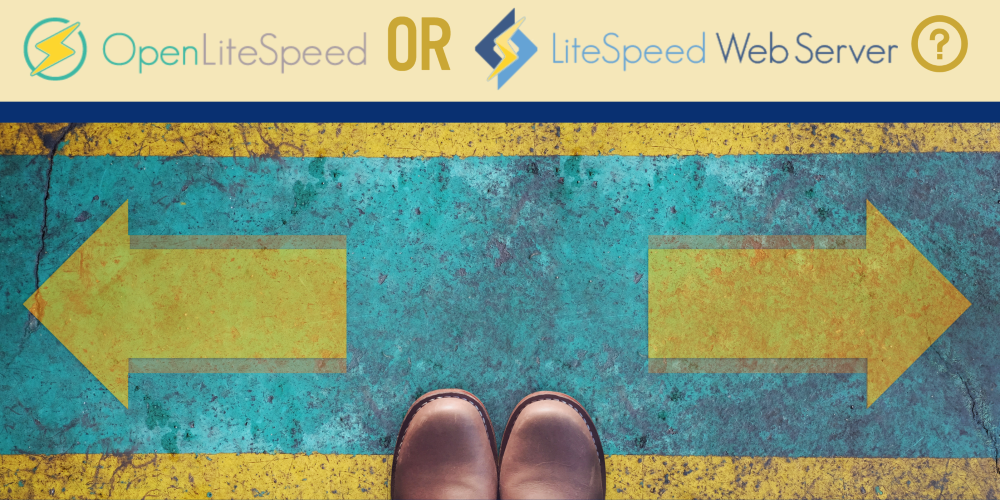OpenLiteSpeed or LiteSpeed Enterprise?

Are you an OpenLiteSpeed user wondering if you should take the next step and upgrade to LiteSpeed Enterprise Web Server? Or maybe you’re new to LiteSpeed entirely, and not sure which server product is right for you. Either way, we can help.
The open source OpenLiteSpeed (or OLS), and the Enterprise-level LiteSpeed Web Server (or LSWS) have many features in common: both are equipped with the powerful LSCache engine, cutting edge HTTP/3 support, unlimited IP-based and name-based virtual hosting, compression with GZIP and Brotli, and so much more.
To help in your decision-making, let’s look at some of the main differences between OLS and LSWS.
Main Differences
.htaccess
.htaccess files are configuration files used by Apache web server to define rules for the server’s behavior on a per directory basis. OLS and LSWS differ in the extent to which they each support .htaccess.
- LSWS supports Apache rewrite rules and the majority of Apache directives. It will automatically detect any changes to
.htaccessfiles, and will adjust as necessary without any need for a server restart. - OLS supports Apache rewrite rules, but does not support Apache directives. You will need to restart the server to load any changes to
.htaccess.
ModSecurity Engine
ModSecurity is an open-source web application firewall, which provides server protection by filtering web traffic through a series of rules. Both OLS and LSWS support ModSecurity rules, but there are differences.
- LSWS boasts a proprietary ModSecurity engine that was built by the LiteSpeed team to deliver superior performance. It processes Apache ModSecurity rules using a highly optimized asynchronous approach.
- OLS also supports Apache ModSecurity rules through a standard ModSecurity v3 engine, using the same library as open source nginx uses.
ESI
ESI, which stands for Edge Side Includes, is a markup language that allows web developers to designate parts of a web page as fragments that the server will process separately from the rest of the page. With ESI, a web page can be broken into different fragments, processed separately, and then re-assembled before being delivered to the browser. It is especially useful in ecommerce applications where there may be a mix of public and private information on a single page. When combined with LSCache, ESI creates a powerful cache solution.
- LSWS supports ESI.
- OLS does not support ESI.
Asynchronous SSL Handshake
The private key handshake of SSL can put a strain on server resources. Asynchronous SSL handshake relieves that strain by moving handshake operations to separate worker threads instead of handling it in the main event-handling thread. This improves SSL performance and reduces congestion in I/O event handling.
- LSWS supports Asynchronous SSL Handshake
- OLS does not support Asynchronous SSL Handshake
WordPress Brute Force Protection
During a WordPress Brute Force Attack, attackers repeatedly access the login page in an attempt to guess a valid user ID and password, and gain entry to the system. Besides the obvious security risks that brute force attacks pose, they also consume considerable server resources.
- LSWS comes with built-in protection against WordPress Brute Force Attack.
- OLS does not have native protection against WordPress Brute Force Attack
Control Panel Support
Web hosting control panels are a popular way for system administrators to handle server management tasks. Many popular control panels were written specifically for Apache servers.
- LSWS is a drop-in Apache replacement, which means that any control panel that supports Apache also supports LSWS. Popular LSWS-friendly control panels include cPanel, Plesk, DirectAdmin, and more.
- OLS is not a direct replacement for Apache, so it cannot automatically use the same control panels as Apache. However, there is a growing number of control panels that support OpenLiteSpeed, including CyberPanel, DirectAdmin, CloudPages, RunCloud, and GridPane. Additionally, pre-built OpenLiteSpeed cloud images are available on every major platform for simple installation.
Licensing
Licensing requirements are also different between the two servers.
- LSWS requires a license. There’s a LiteSpeed license to fit any situation, from the Free Starter license for single domains on small servers, to the unlimited license for large web hosts, and everything in between.
- OLS is 100% free and open source. It may be used by anyone with any number of domains, and any size server, under a GPLv3 License.
Learn More

OpenLiteSpeed and LiteSpeed Enterprise Web Server are both feature rich, and this comparison is just the beginning. We’ve only covered the big differences here. You can explore the full list of features of both servers side by side on our LiteSpeed Web Server Editions page if you’d like to continue your research.
Already know what you want? Choose your own adventure: get OpenLiteSpeed or get LiteSpeed Enterprise today!

Comments